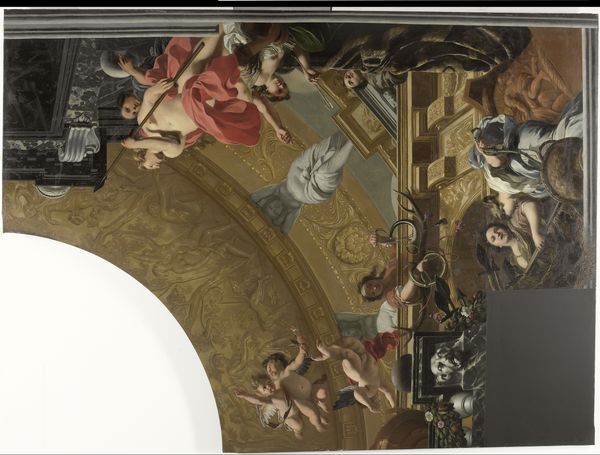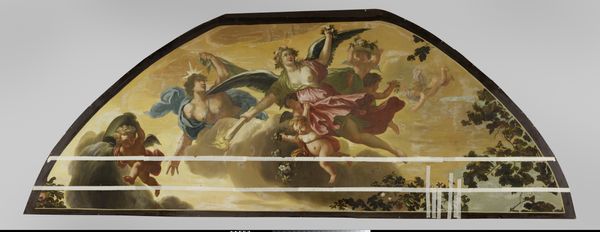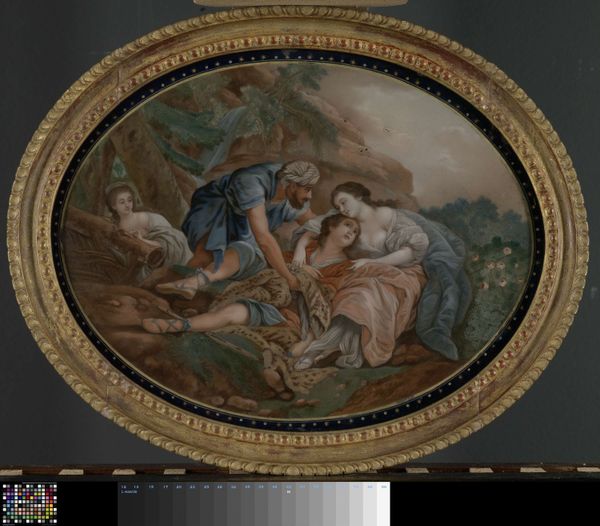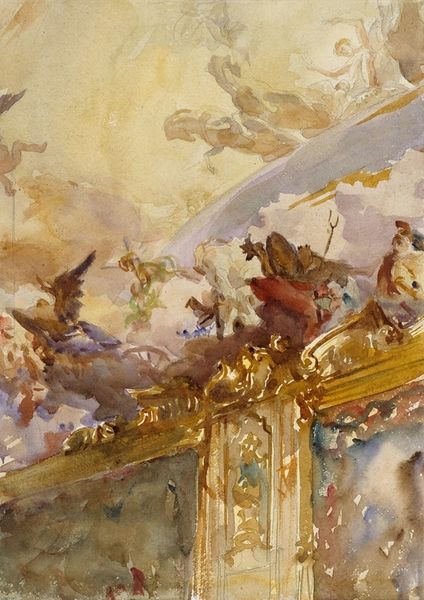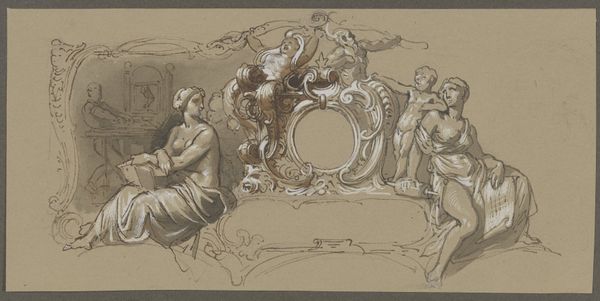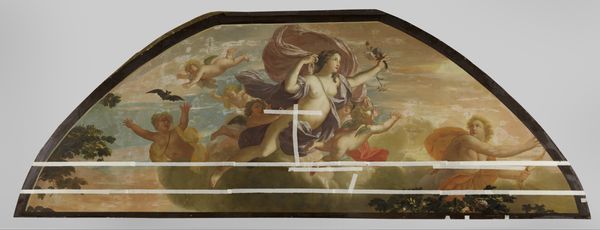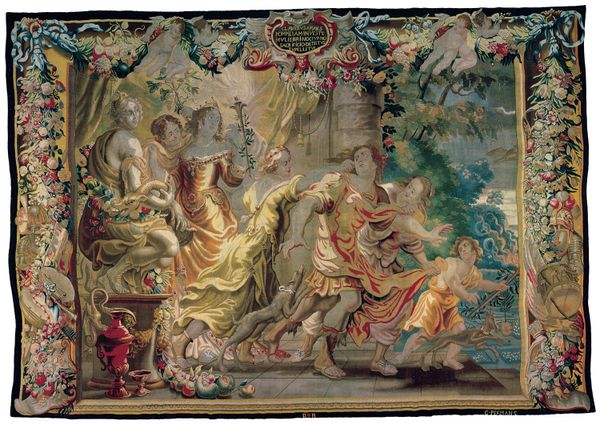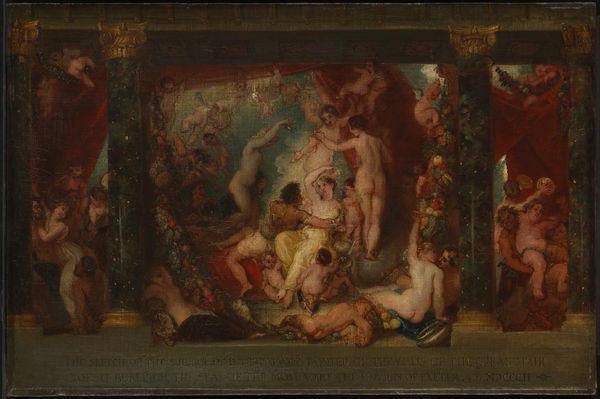
Onderdeel (rechtsonder) van een plafondschildering met als hoofdvoorstelling Diana en haar gezellinnen c. 1676 - 1682
0:00
0:00
gerarddelairesse
Rijksmuseum
painting, mural
#
portrait
#
allegory
#
baroque
#
painting
#
sculpture
#
figuration
#
history-painting
#
mural
Dimensions: height 290.5 cm, width 394.5 cm, depth 4 cm, weight 60 kg
Copyright: Rijks Museum: Open Domain
Editor: This is "Onderdeel (rechtsonder) van een plafondschildering met als hoofdvoorstelling Diana en haar gezellinnen," a fragment of a ceiling painting by Gerard de Lairesse, dating back to about 1676-1682. The Baroque style and the allegorical figures create a really opulent feel. How do you interpret the dynamic between these mythological figures in the context of its original setting? Curator: It's crucial to remember that these ceiling paintings were deeply enmeshed with power. The idealized depiction of Diana and her nymphs isn't just aesthetic; it reflects the patriarchal gaze and control imposed upon women, even within mythological narratives. How might the architecture of the space it adorned have reinforced or challenged these power dynamics for viewers at the time? Editor: That’s a compelling point about the power dynamics. I hadn’t considered how the architectural context would emphasize that. I see what looks like both a hunting scene and musicians; is there a connection here between leisure and dominance? Curator: Exactly! Hunting, traditionally a male pursuit, overlaps with the female figures associated with music and art, underscoring class and gender hierarchies. The "female gaze", if present at all, is subverted through male artistic interpretation. Consider how Lairesse’s personal history and socio-economic positioning at the time contributed to the image of women he chose to paint, in what ways could it influence what the piece reflects? Editor: So, the placement of this painting as a ceiling—literally looking up to it—also reinforces the dominance and idealization? Curator: Precisely. It is about who is allowed to occupy the space above, both literally and metaphorically. Reflecting on how similar images function today can offer powerful critiques of continued power structures, wouldn't you agree? Editor: Definitely. Understanding that paintings are more than just art, but statements on societal power, gives me a fresh way to look at historical pieces. Curator: Absolutely, by asking questions and exploring hidden assumptions we reveal how these old masterworks actively shape current understanding.
Comments
No comments
Be the first to comment and join the conversation on the ultimate creative platform.

